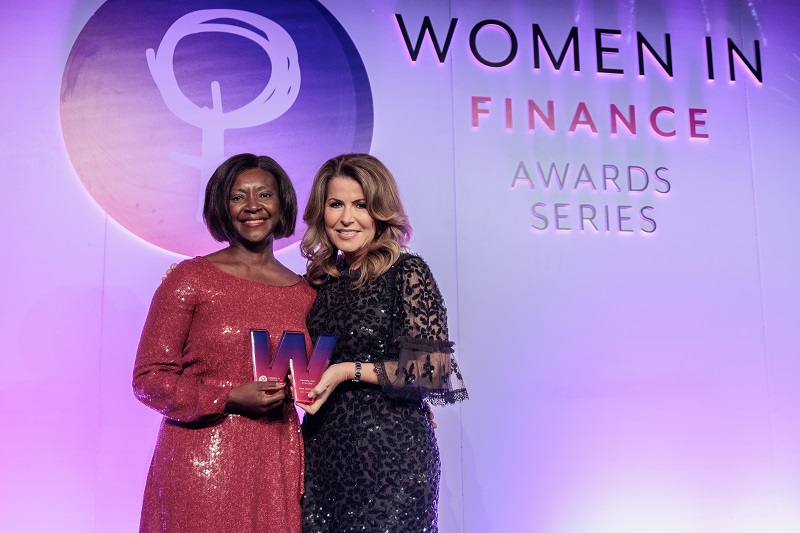Jacky Fox, Managing Director, Security Lead Ireland at Accenture, will be delivering the opening keynote during the upcoming Women in IT Ireland Summit on the 17th November 2020.
Taking place at 10:05am, the keynote will explore how senior decision-makers can prioritise diversity and inclusion agendas.
If you would like to register for the event, please click here. Registration for the virtual summit is free of charge.
We know there’s still a problem with a lack of diversity within IT. Why do you think that is?
One of the main day-to-day challenges for women in technology and specifically security is the definite lack of women in leadership roles. People need to have role models to look up to and to ask questions like, ‘what did they do to get there‘ and ‘how can I emulate that‘?
Another way to improve the lack of diversity in tech is for more men to become diversity and inclusion advocates, and sponsor women to progress to more senior roles. This doesn’t happen enough but will help attract more women to take a risk in applying for the most senior roles. I think some women are quite risk-averse, so putting the necessary support in place is very important.
I would also suggest that more initiatives need to be put in place to specifically support women in their careers, whether that is in technology or other areas. Typically women end up with more caregiving roles, be it for their parents, their children or families in general. Organisations have to make sure that there’s bandwidth there to allow for flexible work arrangements, that can be availed of by parents irrespective of gender depending on their own circumstances.
These thoughts are echoed in our recent Accenture Security report dedicated to the topic of advancing women in cybersecurity — Jumping the hurdles: Moving women into cybersecurity’s top spots.
The report recommends four ways for companies and public organisations to act upon to improve their pipeline of women for leadership positions in cyber security:
1. Invest in developing future women executives.
2. Provide flexible work arrangements.
3. Decode the ‘route to equal’ with metrics.
4. Reward responsible risk-taking.
A change in the perception of tech and education is also important — this was highlighted by a report we created called What Now for STEM?, which found that 86% of teachers in Ireland agreed that students would be more likely to pursue a career in STEM if they knew more about the future job opportunities available to them.
Regarding the lack of gender diversity, at the moment there’s still a disproportionately low number of women who decide to study STEM subjects and, as a result, there is a smaller number of women who enter into careers in technology. Organisations looking to fill technology-based roles should be aware of this and encourage women with other skills to apply, because technology can be taught, at whatever age. Organisations need to recognise the skillset that somebody has, and if necessary, help them to supplement this with the skills that they haven’t learned throughout their education. If this doesn’t happen, a divide will emerge — it’s very important that in the first couple of years of someone’s career, they’re getting the opportunities and the support to learn new skills.
As a woman in IT, how have you gone about promoting diversity within the workplace?
We have a clear target to achieve a 50/50 gender-balanced workforce across Accenture globally by 2025, and we’re working very hard towards that goal.
This aim is easier when filling more junior roles, but when it comes to senior leadership positions in technology a real challenge emerges. As women progress further in their careers it is more likely they will leave technology roles for various reasons, or to have a family, and so we’ve put support systems in place to ensure these women can comfortably come back to their careers.
In order to realise our goal, we have to keep a constant eye on the metrics; what percentage of people do we have coming in, what percentage of promotions do we have, how are we doing on salary equality etc. It’s really important that we measure because if we don’t know a problem exists, we definitely can’t resolve it.
We also have a lot of employee resource groups, where we get together and people can talk about their experiences — here, we help support each other and offer advice on how to progress in a career if that’s what’s right for them at that moment in time.
I’m the Inclusion and Diversity Lead for Accenture Security in Europe, and so a lot of my focus is spent on developing and nurturing these groups for women specifically while spending one on one time with my colleagues to give them advice on how they can advance their careers.
The idea of personal branding is an important concept as well. Recently we hosted workshops on how people can improve their personal brand and overcome challenges like public speaking.
Could you please expand on your opening keynote for the Women in IT Ireland Summit?
I’m going to deliver a call to action for senior and influential figures at organisations to ask if they are doing enough to support diversity and inclusion.
I’ll look to explain how they can measure their success and make leaders in their organisation responsible for the success of promoting a gender diversity program in the workplace.









